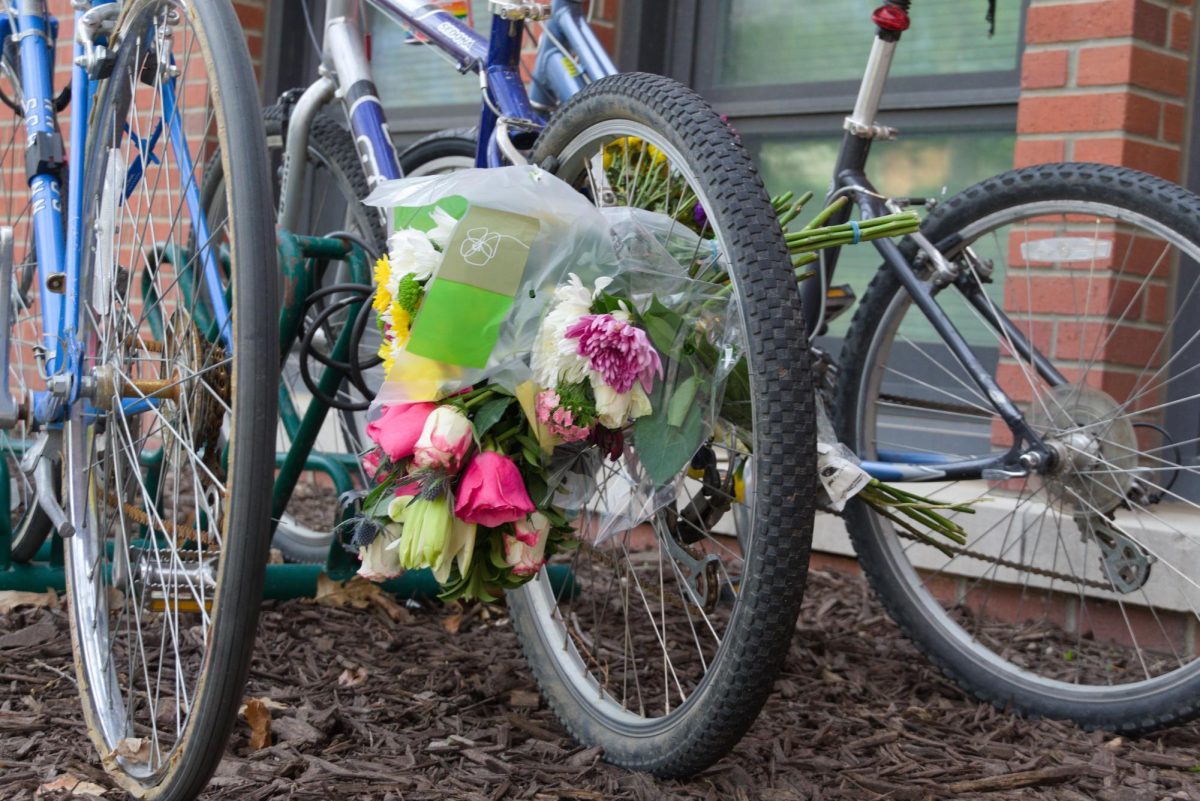For the Department of Theatre, Dance, and Performance Studies (TDPS) and the Grinnell College Museum of Art (GCMoA), mold-related issues have become a source of disruption, with parts of the Bucksbaum Center for the Arts sealed off and two artworks from the museum damaged from mold.
Erik Sanning `89, technical director for the TDPS department, said that the primary affected areas within the purview of the TDPS department are the Flanagan Studio Theatre and the costume and recording studios located in the basement.
Sanning first discovered the mold problem late this summer. “I was doing work in the Flanagan and getting ready for the start of classes, and I began to notice that on the curtains and things like that, I could see mildew and mold growth.”
After informing Facilities Management of the issue in the Flanagan Theatre, Sanning surveyed all of the areas belonging to the theater department and found that the costume studio and recording studio also had obvious and extensive mold growth.
Within a day of being informed of the problem by Sanning, the College also surveyed the affected areas to analyze the extent of the contamination.
From Sanning’s understanding, the nature of the mold contamination was “fairly benign, just extensive,” he said. For this reason, contaminated areas have been sealed off to prevent any mold from spreading further.
In an email to The S&B, Amy Van Manen, Facilities Management office manager, wrote that the reason for the high mold levels in Bucksbaum was “high humidity levels in the building over an extended period.”
Van Manen added that the main types of mold found were penicillium and aspergillus. These genera of mold are commonly found in the environment. According to Mayo Clinic, most strains of these types of mold are harmless, but some can cause aspergillosis, a respiratory infection, if their fungal spores are inhaled. People with mold allergies or asthma may also have adverse reactions to inhaling spores.
“Mold types and levels (spore counts) were sampled/tested in suspected areas within the building, along with outdoor samples used as a baseline,” Van Manen wrote.
Van Manen wrote that the methods used to address the mold were “dehumidification, air filtration, sanitizing surfaces, cleaning fabrics and replacing items that can’t be feasibly sanitized.”
According to Sanning, the first and biggest effect of the mold issue on the theater department has been on the series of staged readings, which is unable to perform at the Flanagan as originally intended.
The lack of stable alternative spaces for rehearsals and performances due to the closure of Flanagan has been a hassle for the cast and crew of these plays. “The cast is having to hop from space to space depending upon what day of the week it is, depending upon what we can find,” said Sanning.
In addition to the spaces themselves being shut down, the closed-off spaces also contain important equipment that has become inaccessible. This has caused problems for classes, rehearsals and performances.
“Our guest artists would come up to us and be like, ‘Hey, I need a cable,’ and I’d be like, ‘That’s great! We have ten of them! I can’t get to any of them, because they’re in the space that’s a … microbial danger zone,’”Sanning said.
Currently, the costume and recording studios in the basement have been cleared of mold and are now accessible to the department, Sanning wrote in an email to The S&B.
According to Sanning, there are around one to two weeks left in the cleaning process before the Flanagan can be safely reopened, which he expects will be in around three weeks
GCMoA has also faced issues due to its own mold problem at Bucksbaum.
Due to the conversion of the heating system at Bucksbaum from central steam heating to hot water heating, work on the building caused humidity issues, affecting certain works in the Museum’s gallery.
The two works affected were Red Dream and Blue Dream by Ingrid Lilligren, according to Museum director Susan Baley. The sculptures, intended as commentary on issues of climate change, consist of “ice placed in the upper ceramic structure that was intended to drip down a wooden structure as the ice melted,” Baley wrote in an email to The S&B. However, due to a sudden humidity spike in the building, mold grew on the wet wood of the sculptures.
The mold on the sculptures was first discovered on the morning of June 21 by Jocelyn Krueger, GCMoA collections manager.
“The two sculptures were immediately removed from the gallery and treated–in consultation with the artist,” Baley wrote. The sculptures were also wrapped in plastic and kept separately from art storage to prevent any spread of the mold to other areas of the Museum or artworks in its collection.
“After multiple treatments, the mold was remediated,” Baley wrote. No other works or areas have experienced damage, but Museum staff and Facilities Management staff are still collaborating to keep an eye on the issue.
“A new HVAC system will be installed in the Museum in Summer 2025,” Baley wrote. This system should be able to provide more precise control over humidity in Museum spaces.



















